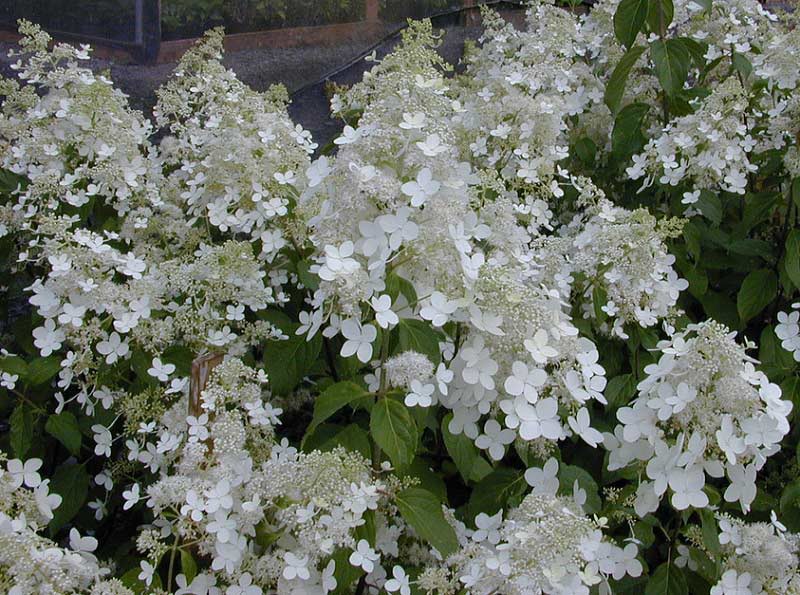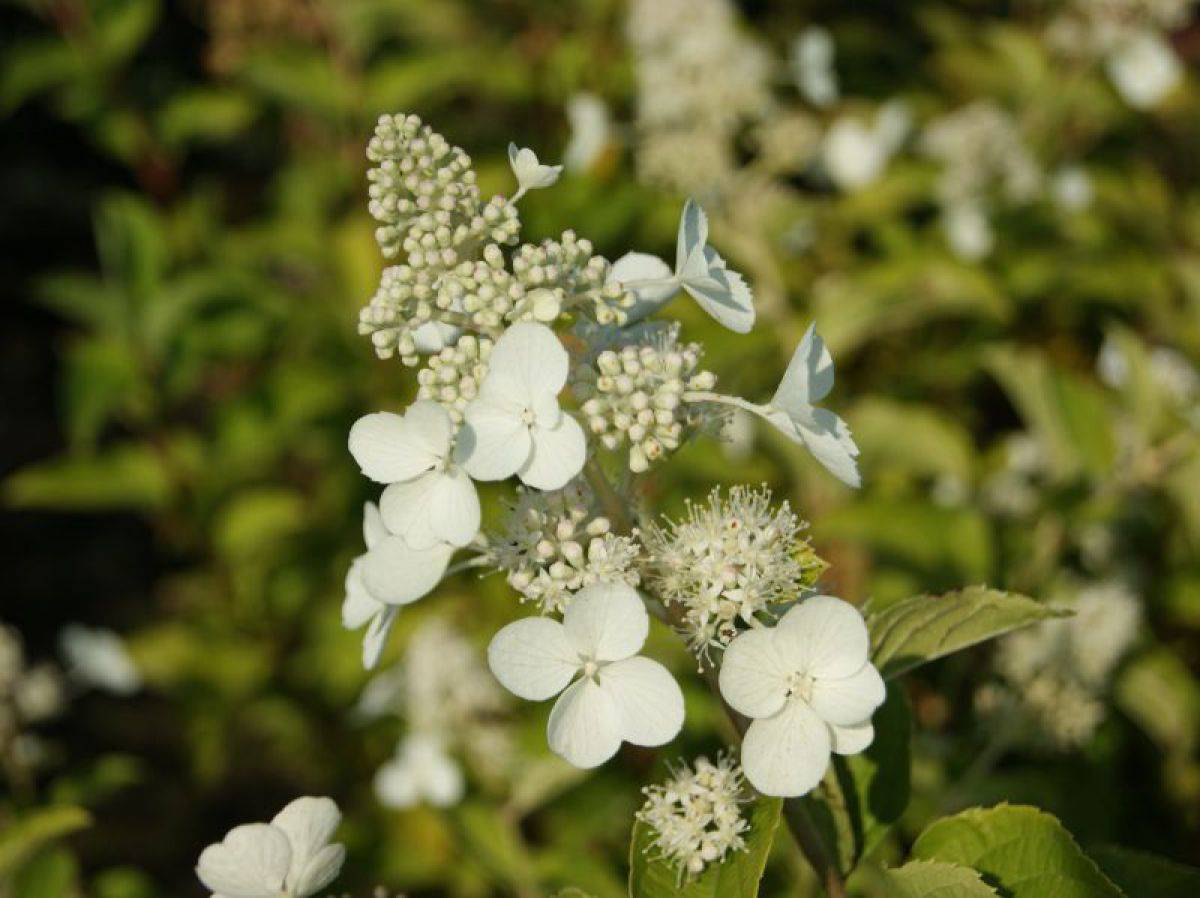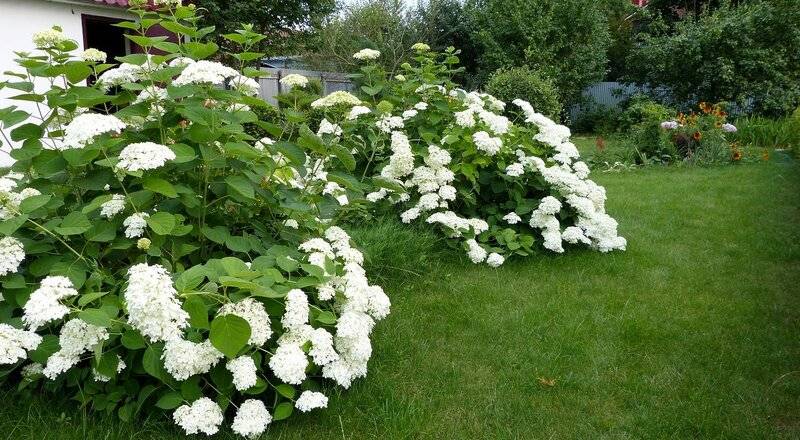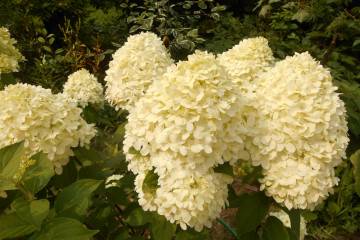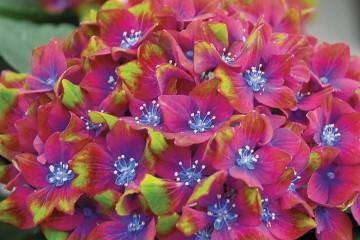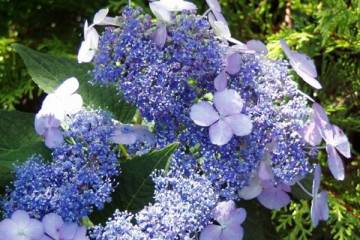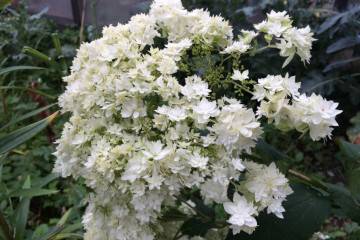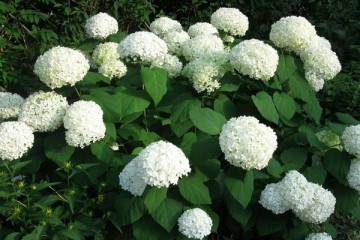Hydrangea Prim White - description, planting and care
Content:
Hydrangea Prim White is one of the earliest varieties of the crop. Snow-white inflorescences begin to open at the end of May and delight the gardener until late autumn. It is enough to follow the simple rules of caring for the shrub so that it blooms again.
Description of the Prim White hydrangea variety and its characteristics
Hydrangea Paniculata Prim White is a deciduous shrub with graceful snow-white inflorescences.
History of origin
The variety was derived from the Dharuma hydrangea. Its Latin name Prim White can be read as "prim white" or "prim white", none of the options is erroneous. This name can be translated as "prim white", which indicates the main characteristic of the variety.
Features of the variety
The average height is 150 centimeters, the crown diameter is about two meters. The bush is symmetrical, with thin long grayish shoots and reddish petioles. The leaf plates are light green. Snow-white inflorescences, as they bloom, change their shade to pinkish or green.
Winter hardiness
This variety is frost-resistant. True, young shoots are unlikely to be able to survive the winter months if the temperature drops below -30 ° C. However, it is enough to take care of the availability of covering material, and then it will be possible to plant the bushes in any region of the country.
Planting and further care
The original panicle beauty-hydrangea Prim White in the southern regions can be planted both in spring and autumn. But flower growers living in the northern regions should plant seedlings in a permanent place in the spring, when the weather is stable.
Site selection and preparation
Experienced flower growers know one simple rule: caring for garden crops begins with choosing a place. The hydrangea soil should be well-drained and moisturized. The best option is loamy soil, which is characterized by a slightly acidic or acidic reaction.
How to plant
When planting hydrangeas, simple rules should be followed: in group plantings, it is necessary to maintain a distance between plants of at least a meter. The size of the landing hole should be 30x30 centimeters.
The hydrangea pit should be filled with the third part of the bucket of humus and peat. Carefully install the seedlings, straighten the roots, place the root collar on the same level with the ground. After that, all that remains is to cover the shoots with soil, water well.
Watering and feeding
For irrigation, use only settled water or rainwater. After the watering procedure, loosen and mulch the soil near the trunk circle.
The best feeding is mullein (ten parts of water will need one part of manure), as well as the following mineral composition:
- 10 liters of clean water;
- 20 grams of superphosphate;
- 10 grams of sulfur - ammonia and potash.
Pruning
In early spring, before the start of sap flow, you need to remove branches and shoots damaged in winter. Cardinal pruning, after which only 50-80 cm shoots remain, is necessary to rejuvenate the hydrangea. This procedure is best carried out in the fall, after flowering.
Preparing for winter
Before the onset of the winter cold, it is important to mulch the hydrangea; peat and humus are suitable for this. The height of the mulch, according to gardeners, should not be less than thirty centimeters. Young hydrangeas that are under three years old must be carefully wrapped in non-woven fabric, and a large amount of snow must be poured under them.
Reproduction
In order to obtain new hydrangeas of this variety, you can propagate an existing shrub. In the period from February to June, woody shoots should be used, and in May-June it is better to use green cuttings for this.
Diseases and pests, means of combating them
This variety is characterized by increased immunity. It can only be weakened by poor-quality care and non-observance of the rules of agricultural technology. So, if the plant receives an excessive amount of moisture, it can be struck by such diseases:
- powdery mildew;
- gray rot;
- viral spotting.
In order to cure the hydrangea, you need to cut off all the affected parts and completely treat the shrub with fungicides.
Use in landscape design
Designers recommend planting the beautiful Prim White in both group and single plantings. It is suitable for decorating recreation areas, lawns. Looks great in combinations with coniferous shrubs and trees, as well as in compositions with herbs.
Hydrangea paniculata Prim White is a rather unpretentious plant that feels good even under not the most favorable climatic conditions, does not lose its decorative effect. Such a shrub will become the original accent of the garden area.
